In the sub-Rs 30,000 segment, the competition is heating up, and two smartphones offer a really good choice to buyers. The iQOO Neo 10R and the Motorola Edge 60 Pro are the two really competitive smartphones at this price.
On one side, you have the Motorola Edge 60 Pro, a phone that brings sleek design, a premium UI, and a vibrant display. On the other hand, the iQOO Neo 10R, a performance-centric device built for speed, gaming, and endurance. Both promise a lot, but which one actually delivers a better all-around experience? Let’s break it down.
iQOO Neo 10R vs Motorola Edge 60 Pro: Design and Build
Motorola is essentially known for its design, and the Edge 60 Pro follows up on that. It has an IP69 rating and Gorilla Glass 7i on the front, it offers industry-best durability. It feels luxurious in hand, thanks to its vegan leather back, curved edges, and ultra-light form factor.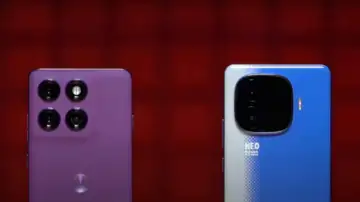
The iQOO Neo 10R, while functional and sturdy with an IP65 rating and Schott Panda Glass, feels more basic in the hand. Its dual-tone finish may catch the eye, but Motorola clearly wins with the aesthetics and build quality.
iQOO Neo 10R vs Motorola Edge 60 Pro: Performance
iQOO, however, turns the tables when it comes to performance. It runs on the Snapdragon 8s Gen 3 and the chipset and the Edge 60 Pro runs on the MediaTek Dimensity 8350 Extreme chipset.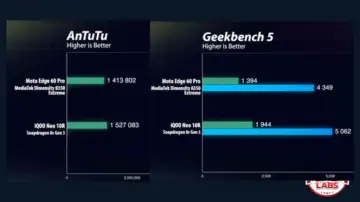
On the AnTuTu test, iQOO comfortably scored 1.5 million points, while the Moto lags slightly behind at 1.4 million+ points.
The difference becomes clearer during gaming. While the Moto is capped at 60fps in BGMI, iQOO supports 90 FPS (120 FPS with the latest software update) and maintains an impressive 88 FPS average. It’s smoother, snappier, and more consistent. So if you are a gamer, you would really like that.
iQOO Neo 10R vs Motorola Edge 60 Pro: Battery
The iQOO Neo 10R also has a good battery life. It delivers a massive 22 hours and 49 minutes on the PCMark test. In comparison, the Motorola Edge 60 Pro lasts less than 10 hours.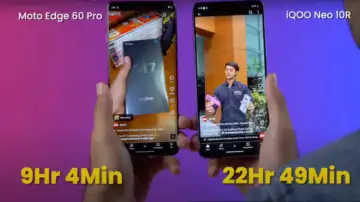
However, Motorola charges faster, going from 0 to 100% in around 50 minutes, compared to iQOO’s 64 minutes. So it comes down to your preference: longer battery or quicker charging?
iQOO Neo 10R vs Motorola Edge 60 Pro: Software Experience
Motorola is known for its clean UI experience, but things have changed slightly. While the Edge 60 Pro still offers a minimalist, near-stock Android experience, it’s no longer bloat-free. It comes with a few pre-installed apps this time.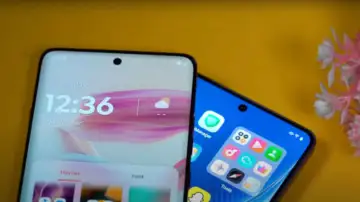
The iQOO Neo 10R fares worse in this department, with heavier bloatware and a more cluttered interface. However, Motorola’s visual refinement and smooth UX still feel more polished overall.
iQOO Neo 10R vs Motorola Edge 60 Pro: Display
The Motorola Edge 60 Pro features a 6.7-inch P-OLED panel that supports 10-bit colour, 120Hz refresh rate, and HDR10+. On the other hand, we have a 6.78-inch AMOLED panel on the iQOO Neo 10R that supports 10-bit colour, 144Hz refresh rate, and HDR10+.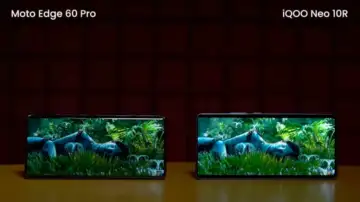
But, Moto offers a more vibrant and colour-rich display, peaking at 2380 nits of recorded brightness with good colour accuracy (delta E 0.9). Content pops on the screen, which makes it ideal for media consumption.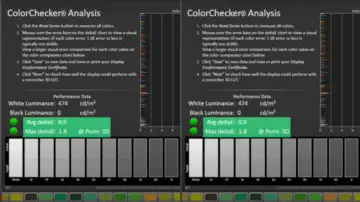 Moto Edge 60 Pro vs iQOO Neo 10R – Display Test
Moto Edge 60 Pro vs iQOO Neo 10R – Display Test
iQOO, on the other hand, features a slightly less bright (2000 nits of recorded brightness) but more responsive 144Hz panel. While it may not look as punchy, it feels faster, especially in day-to-day use and gaming. Additionally, we also recorded a delta E of 0.9 on the iQOO Neo 10, so you don’t have to worry about colours here as well.
iQOO Neo 10R vs Motorola Edge 60 Pro: Camera Battle
On paper, Motorola’s triple-camera setup looks stronger with a 50-megapixel main, 50-megapixel ultrawide, and a 10-megapixel telephoto. iQOO features a dual camera setup with a 50-megapixel main and an 8-megapixel ultrawide.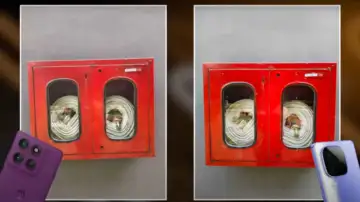
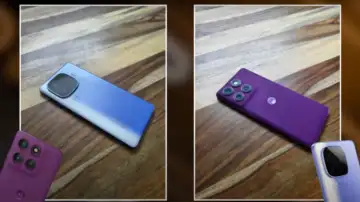
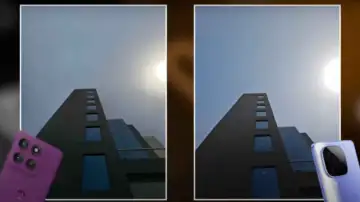
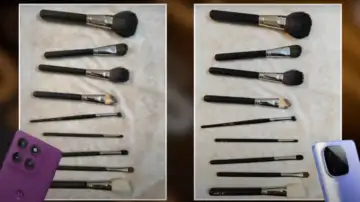
In real-world testing, the iQOO Neo 10R delivers punchier, Instagram-ready shots, though it tends to oversaturate. The Motorola Edge 60 Pro clicks more naturally looking shots. But in some places, you will notice that it lacks consistency in colours.
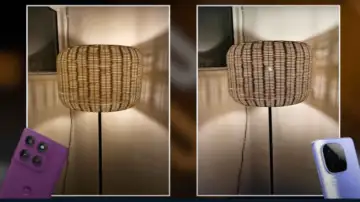

Even in the low light shots, I feel that iQOO Neo 10R got better, the visuals are sharp and crisp, and the light management is also better compared to Moto. It takes bright shots with good HDR management.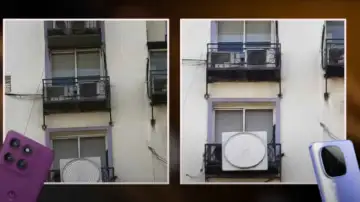

But the better camera setup on the Edge 60 Pro does show up in telephoto shots. The details on the Edge 60 Pro are far better than iQOO, because it doesn’t have a telephoto lens. It does try to match up with AI upscaling, but still lags behind a little.
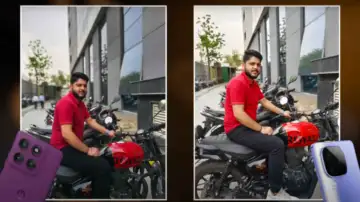

In portrait shots as well, the Edge 60 Pro takes the lead. It creates a beautiful bokeh, the skin tones are correct and more on the natural side. iQOO Neo 10R smoothens the face, adds a sort of beauty filter, and a yellow tint to the face, which I am not the biggest fan of.
Verdict
If you prefer a stylish design, premium build, clean and smooth UI, along with good cameras, you can go for the Motorola Edge 60 Pro.
But if you want top-tier performance, long battery life, great gaming, high refresh rate, and bright and colourful pictures, the iQOO Neo 10R is a good option.
